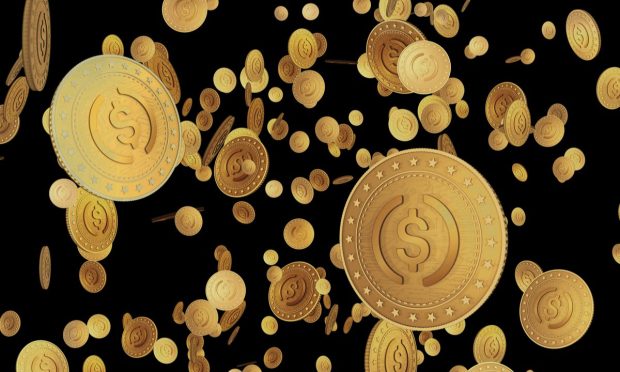Unstable Stablecoins Clear Path for Banks to Step In

The cryptocurrency-flameouts this week have revealed hard truths about privately-issued stablecoins: They’re anything but stable. They’re no safe haven from turmoil.
They may not be all that useful for payments, either.
The premise of the stablecoin is a simple one. The digital offerings are pegged to another asset — usually a government-issued, national currency like the dollar. Often, the “peg” is done on a one-to-one basis — a dollar backs a digital token. The peg, the thinking goes, offers some backstop as to what the stablecoin is worth, and theoretically can help avoid the volatility that is so pervasive in cryptos that don’t have that peg, that fluctuate wildly during frenzied day-to-day trading.
It’s an industry that’s grown significantly in the past few years, and by some estimates now tops about $150 billion, as measured in market cap. That’s from an essentially standing start five years ago, but about 9% lower from peaks earlier in the year, showing that billions of dollars have been lost in the interim.
Promise of Stability Not the Reality
The promise to be a viable, stable alternative to cryptos — well, things have not worked out that way. That’s because the actual backing of those coins often remains opaque, tied to a basket/mix of a range of short-term holdings, often commercial debt and government debt in addition to dollars. Illiquidity in any of those holdings winds up shattering the liquidity of the stablecoin itself. Last week, amid FTX’s implosion, we saw another reminder that this can, and does, happen.
Tether dropped below $1, as did Binance’s USD and others. There’s a difference between having cash in the coffers as the stablecoin backing and having something that “approximates” cash. Back in May, stablecoin panic brought tether (USDT) “below the buck,” as regulators questioned the composition of reserve assets. Last week, as reported by CoinDesk, Crypto.com halted the flow of two stablecoins, USDC and USDT. And Bloomberg reported last week that $2 billion worth of stablecoins were removed from exchanges. None of this bodes well for the coins being used in wider commerce.
The stablecoin market is one where pretty much any private firm can strive to create a coin. If you want proof positive that the door is open wide enough to let some bad actors in — well, FTX’s then-CEO Sam Bankman-Fried said last month the exchange was working on its own stablecoin. One shudders to think what might have happened in that event.
“We’ve got a lot of casinos here in the Wild West,” Securities and Exchange Commission (SEC) Chairman Gary Gensler said more than a year ago. “And the poker chip is these stablecoins.”
FTX might have been one casino that would have left a lot of gamblers — beyond the creditors already waiting in line — losing their shirts.
The larger issue is why private firms should effectively be allowed to issue private money, especially since stablecoins tend to be used in somewhat of a leapfrog fashion. Traders can, and do, use their fiat to but stablecoins, and then use the stablecoins to buy, say, bitcoin. As a payment instrument, stablecoins likely are just too volatile.
The Wild West nature of the stablecoin market can be effectively sidestepped — and a new age of digital assets set in motion — by leaving the stablecoins to the banks. Banks are the trusted actors, licensed to protect consumer interests, that have the deposits and technology in hand to truly digitize/tokenize deposits on a truly 1:1 basis in a transparent manner.
The legal authority for banks to create and issue stablecoins is in place (granted, among other agencies, by the Office of the Comptroller of the Currency), but there’s been no public comment or approval yet on banks’ applications to issue the coins. The private sector fiascos of the past few months should prove the tipping point to let the professionals step in.
For all PYMNTS crypto coverage, subscribe to the daily Crypto Newsletter.
